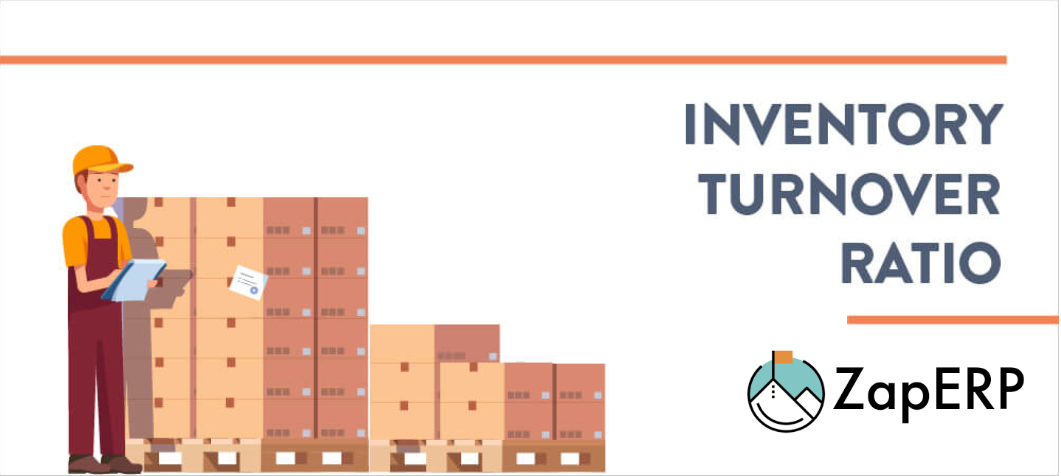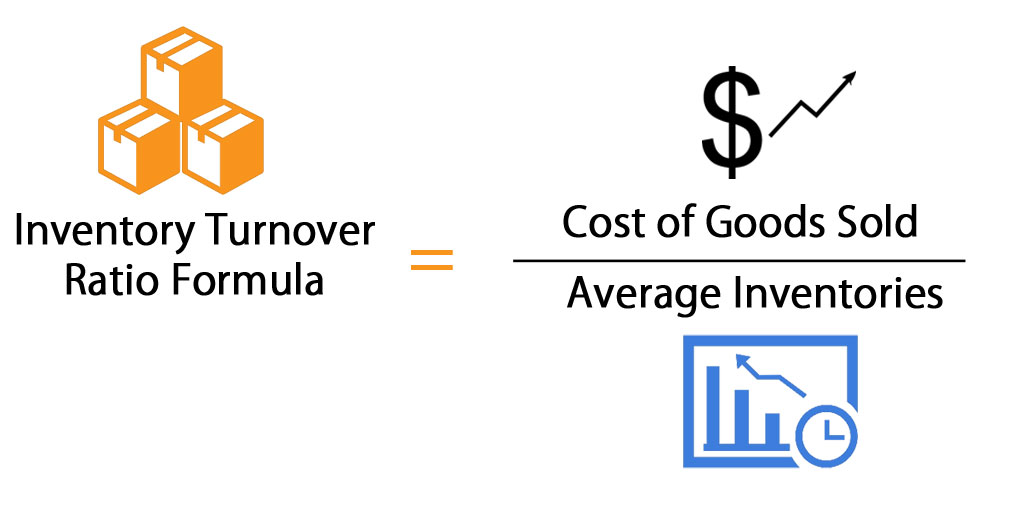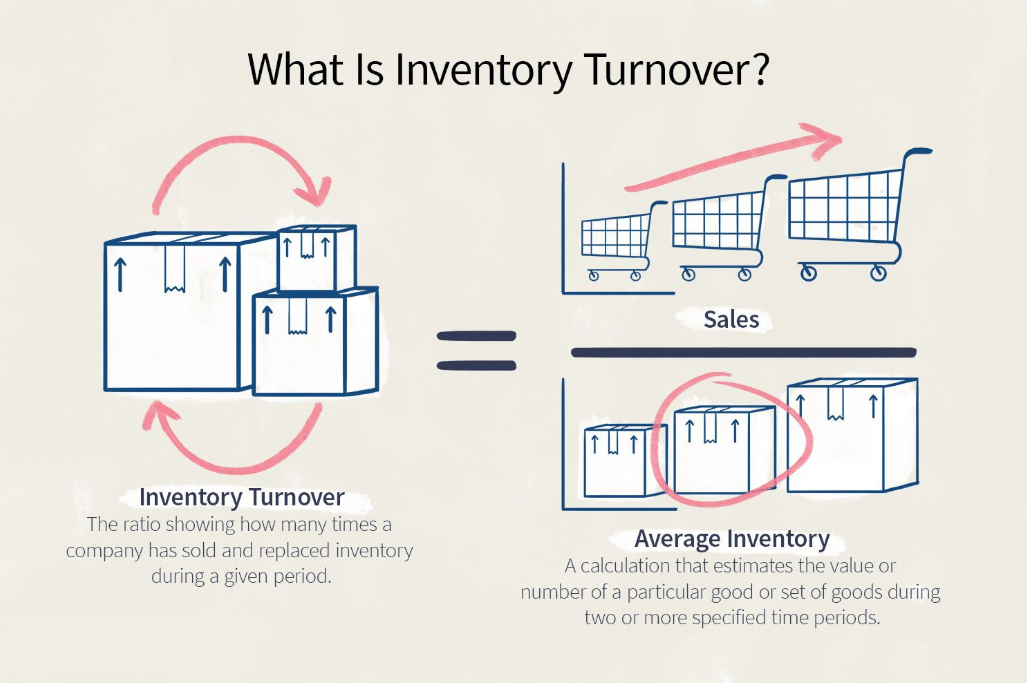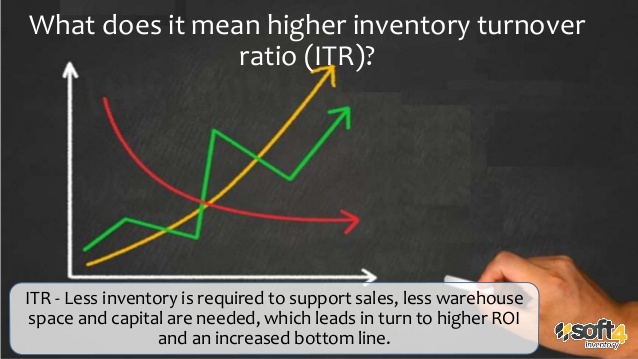If a company is to enjoy a good return on investment, it would need to be efficiently managed. Every aspect of its management cog should be well oiled and should be turning efficiently. If it has an inventory of stocks, the need would be to carry the optimum stocks while maintaining optimum volumes in sales. Inventory would be an essential aspect in its business module, which would relate to raw materials, finished goods, goods in stores, etc. This would be a very ideal situation, but how many companies out there work in such an efficient way. To help you understand the importance of such efficient management, we look at one very important aspect, which would be the inventory turnover ratio.
The inventory turnover ratio in simple terms would be the volume of inventory held by the company and how often they have been replenished. If sales are good, inventory will move faster, but if sales are low, inventory could rise. These two should be well synchronized to ensure both are at optimum levels. One should not outnumber the other.
The word to remember would be “optimum” but not “maximum or minimum”. It is only when sales and inventory are at optimum levels would the profitability of the company be at optimum. If a company could endeavor to strike the perfect balance between the two, its inventory turnover ratio would be at efficient levels.
#1. Inventory Turnover Ratio Formula
This is a very simple formula if any company could understand it. It is not necessary to hold high inventory to achieve high sales. This has been a misconception with many business managers. Your inventory should be in relation to your market share, and when you increase the latter, the former too has to be proportionately increased.
Inventory Turnover = Sales / Average inventory
The Average inventory in such a scenario would be the inventory at the beginning of sales and at the end of the sales. It should be understood that both are continuous processes; hence, both these important aspects should be at optimum levels. If a company could maintain an efficient inventory turnover ratio, it would be enjoying profits all year through.
#2. Interpretation Of Inventory Turnover Ratio
To interpret the inventory turnover ratio of a company, it would need to look at its market share and whether it is doing justice to ensure that it enjoys it. If your inventory turnover ratio is inefficient, the company could be losing on sales opportunities unwillingly. That vacuum would either be grabbed by the competition or if they are inefficient too, it could be lost to both.
There could be a demand created, which again could be a loss for the company though they may be holding high inventory but with poor sales.
#3. Calculation Of Inventory Turnover Ratio
To maintain high-efficiency levels, companies would need to be proactive when it comes to inventory turnover ratio calculations. To do so, it would be prudent to take this calculation frequently and at regular intervals. It would show the real situation in the company as far as the inventory turnover ratio is concerned.
Dividing the sum of the beginning inventory and ending inventory by two would give the average inventory. Then dividing the sales by the average inventory would provide the inventory turnover ratio and would show whether the company is on an efficient footing or vice versa. To determine the profitability of the company, the inventory turnover ratio should be at optimum. It is imperative that the inventory turnover ratio is an ongoing operation, and it is always monitored very closely. If a company could maintain high efficiency on the inventory front, it would sure reciprocate with a good return on investment.
#4. What is the Ideal inventory turnover ratio?
If a company could have a high inventory turnover ratio, it would mean that sales are proliferating. Inventory that comes in and stays put longer without movement would show a poor inventory turnover ratio. The ideal situation would be for the goods never to come into the company but to move out directly to the consumer. Hence the next best thing would be to ensure that the inventory that comes in is moved out as fast as it possibly can.
This does not mean that it is only the movement of inventory is profitable. There is the important factor in making a reasonable profit from the inventory turnover ratio. The movement of inventory should be at a profit, and that is important to ensure that the company stays afloat. If not, it could be having a good inventory turnover ratio but losing money by selling its goods at a loss.
#5. Conclusion
It is important have a very thorough knowledge of your business before your company would order to increase inventory. The inventory turnover ratio would need to be high. The goods coming into the company is moving out of it faster. To do so, the sales would be encouraging, and the inventory would be at a minimum.
Close monitoring is a very important aspect of any business. It is not only the final goods waiting to be sold that matter. Raw materials and every other type of inventory need to be added into the equation. Whatever carries a value and space to keep it would need to be covered under the inventory turnover ratio.
There is no chance of slacking in this operation. It is only when both go hand in glove would there be optimum profitability in the company. Analyzing the inventory turnover ratio often and that too efficiently would matter at all times.






 Start using ZapInventory today
Start using ZapInventory today

2 Comments